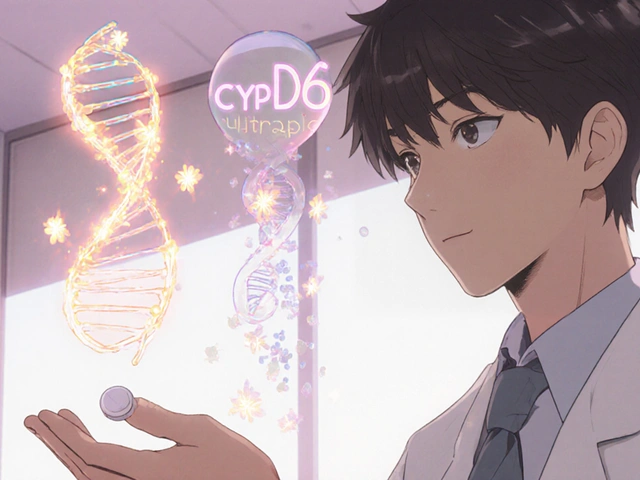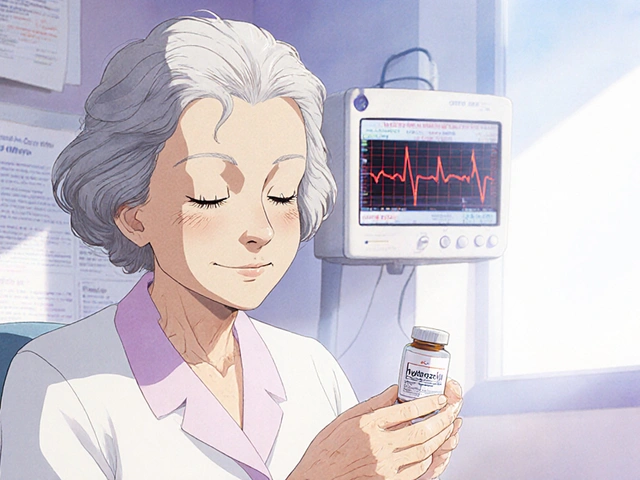Generics make up 90.7% of all prescriptions filled in the U.S. They save patients and the system billions every year. But behind those numbers is a quiet risk - one that pharmacists are often the first to notice. Not all generics are created equal. Some work fine. Others? They cause problems patients can’t explain, and prescribers don’t always catch. When should a pharmacist step in?
When a Generic Doesn’t Act Like the Brand
The FDA says generics must be bioequivalent to brand-name drugs. That means their active ingredients must match, and their absorption into the bloodstream must fall within 80-125% of the original. Sounds strict, right? But that 20% range isn’t just a number - it’s a gap where things can go wrong.Take levothyroxine, the most common thyroid medication. A patient on a stable dose of 75 mcg for years might switch to a new generic manufacturer. Two weeks later, they’re exhausted, gaining weight, and their TSH jumps from 2.1 to 8.7. That’s not a fluke. Studies show switching manufacturers for NTI (narrow therapeutic index) drugs like this can lead to therapeutic failure 2.3 times more often than with other drugs. The difference in blood levels might be small, but for the thyroid, even a 10% shift can throw the whole system off.
Same thing with warfarin. One patient’s INR was stable at 2.5 for six months. After a generic switch, it spiked to 5.2. No change in diet, no new meds - just a different pill. That’s not coincidence. It’s bioequivalence variability hitting a drug where the margin between safe and dangerous is razor-thin.
Look-Alike, Sound-Alike: The Silent Killer
It’s not always about chemistry. Sometimes, it’s about confusion.Hydrocodone/acetaminophen and oxycodone/acetaminophen look nearly identical in pill form. Both are white, oval, scored. One is a strong opioid painkiller. The other? Even stronger. Mix them up, and you’re not just giving the wrong drug - you’re risking overdose, respiratory failure, death.
According to the Institute for Safe Medication Practices, 14.3% of all generic medication errors come from look-alike or sound-alike names. Pharmacists see this daily. A patient asks for “the blue pill for pain,” and the tech grabs the wrong one because the labels are too similar. Or worse - the prescriber writes “Oxy 5” and the pharmacist assumes it’s oxycodone, but the system pulls hydrocodone because the code is close.
These aren’t hypotheticals. In 2022, the FDA issued a warning after 47 cases of therapeutic failure were tied to inconsistent dissolution in certain generic versions of diltiazem CD. Patients got less drug than needed. Their blood pressure spiked. Some ended up in the ER.
Extended-Release and Complex Formulations: The Hidden Trap
Not all drugs are easy to copy. Immediate-release pills? Simple. But extended-release, delayed-release, transdermal patches, inhalers, injectables? Those are much harder to replicate exactly.Generic extended-release opioids failed dissolution testing at a rate of 7.2% in FDA audits - more than six times higher than immediate-release versions. What does that mean? The drug doesn’t release slowly like it should. Instead, it dumps all at once. A patient takes one pill expecting 12 hours of pain control - and gets a sudden spike in drug levels. That’s not a generic failure. That’s a safety hazard.
Same goes for delayed-release GI meds like pantoprazole or omeprazole. Patients report heartburn returning after switching generics. Why? The enteric coating didn’t dissolve properly. The drug didn’t reach the right part of the gut. It’s not the active ingredient - it’s the delivery system. And that’s something the FDA’s bioequivalence tests don’t always catch.
What Pharmacists Should Do
You don’t need to be a scientist to spot trouble. You need to be observant.- Track the manufacturer. Write it down on the label or in the system. If a patient reports a problem, you need to know which batch they got.
- Check the Orange Book. Look for “AB” ratings (therapeutically equivalent) and avoid “BX” (not equivalent). If a drug is flagged BX, don’t substitute without consulting the prescriber.
- Ask patients directly. After a switch, call them back in a week. “How’s the medication working?” is a simple question that catches 80% of issues before they escalate.
- Flag NTI drugs immediately. Levothyroxine, warfarin, phenytoin, digoxin, cyclosporine, tacrolimus - these are high-risk. If a patient has been stable and suddenly isn’t, suspect the generic.
- Report it. Use the FDA’s MedWatch system. One report might not change much. But 100? That triggers an investigation. In 2022, pharmacist reports increased by 18.3% in states with mandatory reporting - and those states saw fewer incidents the next year.
Why Patients Still Trust Generics - and When They Shouldn’t
Most patients are happy with generics. A 2023 Consumer Reports survey found 78.3% were satisfied, mainly because they saved money. That’s the win. But 22.4% reported different side effects after switching manufacturers. That’s the red flag.Patients don’t know the difference between manufacturers. They assume “generic” means “same.” They don’t realize that the inactive ingredients - dyes, fillers, binders - can change. And those can cause allergic reactions, GI upset, or even alter absorption.
One patient in a Pharmacy Technician subreddit thread described switching generic levothyroxine brands and developing severe diarrhea. Her doctor thought it was IBS. The pharmacist noticed the change in manufacturer and suggested switching back. Symptoms vanished in three days.
That’s the power of a pharmacist who pays attention.

The Bigger Picture: Regulation Isn’t Perfect
The FDA inspects over 2,000 facilities a year. In 2022, they found 187 data integrity issues and 243 quality control failures in generic manufacturing plants. Many of these were overseas - in India and China, where most generics are made.The system relies on trust. But trust without verification is dangerous. The FDA’s 2023 Drug Shortage Program identified 47 shortages directly caused by quality issues. That’s not supply chain - that’s bad manufacturing.
And while the agency plans to increase generic sampling by 40% over the next three years, that’s still reactive. The real work happens at the pharmacy counter - where the pill meets the patient.
What’s Next
The FDA is testing AI to detect patterns in adverse event reports. Soon, algorithms might flag a cluster of complaints about a specific generic before it becomes a crisis. That’s good. But AI won’t replace the pharmacist who remembers that Mrs. Jenkins always gets tired after the blue pill.Until then, the frontline defense is human. It’s the pharmacist who notices the TSH spike. Who remembers the last time this patient had trouble. Who asks, “Did anything change with your meds?”
Generics are essential. But they’re not magic. They’re medicine - and like all medicine, they demand vigilance.
Can all generics be safely substituted for brand-name drugs?
No. While most generics are safe and effective, some - especially narrow therapeutic index (NTI) drugs like levothyroxine, warfarin, and phenytoin - carry higher risk when switched between manufacturers. The FDA’s Orange Book lists therapeutic equivalence codes; avoid substituting drugs marked "BX" (not therapeutically equivalent). Even for "AB"-rated drugs, patients may react differently to changes in inactive ingredients or formulation.
What should a pharmacist do if a patient reports side effects after switching generics?
First, document the exact generic manufacturer and lot number. Then, ask when the switch happened and whether symptoms began shortly after. For NTI drugs, check lab values like TSH or INR if available. Contact the prescriber to discuss switching back to the original brand or manufacturer. If the issue persists or involves serious harm, report it to the FDA’s MedWatch program. Many pharmacists overlook this step, but reports from frontline providers are what trigger FDA investigations.
Are generic drugs made in the U.S. safer than those made overseas?
Not necessarily. The FDA inspects both U.S. and foreign facilities using the same standards. However, in 2022, over 63% of quality-related issues found during foreign inspections occurred in facilities in India, and 25% in China. That doesn’t mean all foreign generics are unsafe - many are excellent - but it does mean pharmacists should be especially vigilant with generics from regions with a history of compliance issues. Tracking manufacturer origin helps identify patterns when problems arise.
Why do some patients say generics don’t work as well as brand-name drugs?
There are a few reasons. First, bioequivalence allows up to a 20% variation in how much drug enters the bloodstream - enough to matter for drugs like digoxin or tacrolimus. Second, inactive ingredients (fillers, dyes, coatings) can affect how the drug is absorbed or tolerated, leading to GI upset or allergic reactions. Third, extended-release formulations are harder to replicate; if the release mechanism fails, the drug may not work as intended. Patients aren’t imagining it - they’re noticing real differences.
How can pharmacists reduce errors with look-alike/sound-alike generics?
Use tall-man lettering (e.g., HYDROcodone vs. OXYcodone) on labels and in computer systems. Always confirm the prescriber’s intent when the order is unclear. Store similar-looking generics in separate bins. Train staff to double-check names and strengths before dispensing. Most importantly, counsel patients: “This is oxycodone/acetaminophen - not hydrocodone. The name is similar, but they’re different strengths.” Simple communication prevents mistakes.






